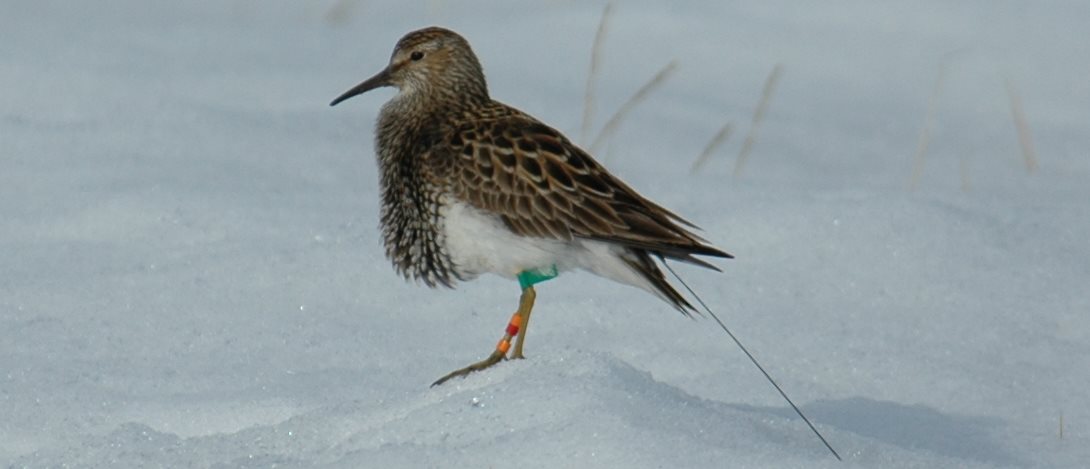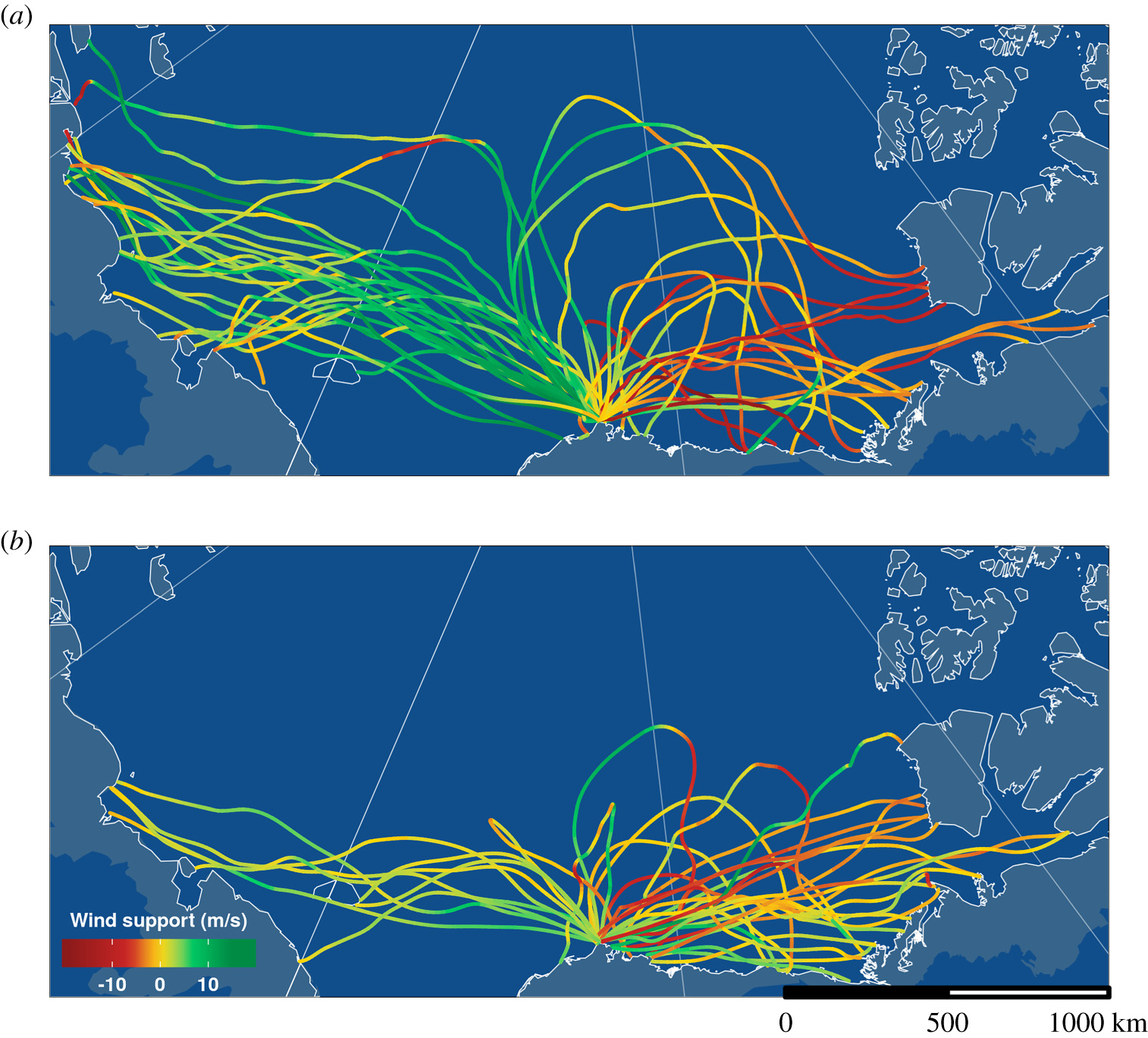← Back
Winds influence where male pectoral sandpipers will try and breed

Some migratory birds change their breeding sites every year, or even several times in a season. Pectoral sandpipers are among them, and understanding their breeding behaviour thanks to Argos satellite telemetry can help to better protect them.
The pectoral sandpiper (Calidris melanotos) is a small shorebird migrating in spring to the Arctic to breed, different from the spoon-billed sandpiper. The species is polygynous, i.e. a male will try to inseminate as many females as possible and provides no parental care. Males compete intensely for access to females and many males do not sire any offspring at a particular site. Earlier work showed that males that slept the least sired most offspring. Intense competition for mating might be the reason why individuals rarely return to the same site between years, in contrast to most monogamous migratory species. Understanding why they would choose one site over another could also help in protecting the species.
Visiting many sites within a single season
In both 2012 and 2014, 60 adult male pectoral sandpipers were caught and equipped with 5 g Solar Argos PTTs to answer questions about migration and breeding behaviour.
Results show that most males visit several potential breeding sites during the four to six weeks-long breeding season. Individuals seem to move between sites in any direction, at any time and over variable distances. Within a single season, individuals can cover considerable distances, covering a substantial part of the entire species’ breeding range.
More info about animal tracking with Argos
Flying with the wind?
Flying up to 13,000 km within the short Arctic breeding season must be costly in terms of energy and time. A new analysis of the tracks now asks whether the wind conditions influence the breeding season movements of individual male pectoral sandpipers. Do males decide where they will go next based on the wind, and do they adjust their flight path in response to changing wind conditions?

Tracks of male pectoral sandpipers that left Utqiagvik, Alaska (lower centre of the map) during the breeding season in June 2012 (top) and 2014 (bottom). Track colour indicates wind support, i.e. the length of the wind vector in the direction of the bird’s movement (ground vector), calculated using wind data at 750 m altitude (ECMWF ERA Interim). Watch a movie of these flights and for individual tracks see https://www.youtube.com/watch?v=A-Q5J1wRBUA&feature=youtu.be. (credit: Max Planck Institute for Ornithology; from [Krietsch et al, 2020])
The study shows that the strength and direction of the winds at the departure location were important predictors of the direction in which the male pectoral sandpipers flew and hence where the male will sample potential breeding sites. The energetic cost of their travel is thus reduced by tail winds. The researchers found no evidence that males waited for optimal wind to leave to a specific target area, but they were more likely to fly to the Russian Arctic with wind support. This can explain the high flexibility in migration paths and sampled breeding sites those birds exhibit.
The variability in movement patterns can lead to large differences in local population size from year to year, rendering conclusions about changes in population size based on local counts difficult to interpret.
References & links
- Krietsch J., M. Valcu and B. Kempenaers, 2020: Wind conditions influence breeding season movements in a nomadic polygynous shorebird, Proc. R. Soc. B.28720192789 http://doi.org/10.1098/rspb.2019.2789
- Kempenaers, B., M. Valcu, 2017: Breeding site sampling across the Arctic by individual males of a polygynous shorebird. Nature 541, 528–531 (2017). https://doi.org/10.1038/nature20813
- Lesku, J.A., N.C. Rattenborg, M. Valcu, A.L. Vyssotski, S. Kuhn, F. Kuemmeth, W. Heidrich, B. Kempenaers, 2012: Adaptive Sleep Loss in Polygynous Pectoral Sandpipers, Science 28 Sep 2012: Vol. 337, Issue 6102, pp. 1654-1658. DOI: 10.1126/science.1220939
Photo: A male pectoral sandpiper with an Argos PTT (credit: Max Planck Institute for Ornithology)

